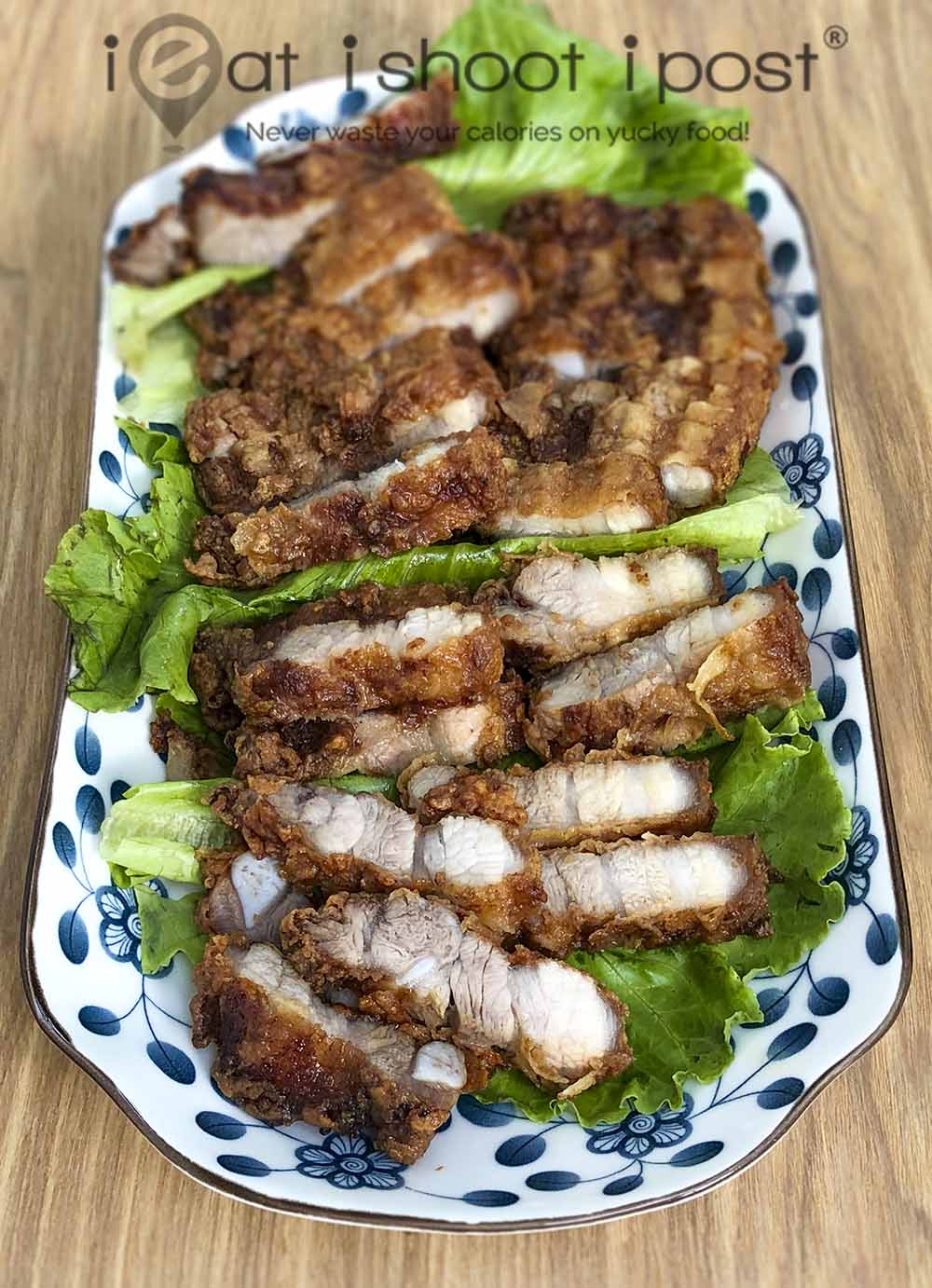
This is one of the most deliciously addictive things you can do with pork belly! Once it is ready, it would be hard to keep everyone from pinching a piece. Sometimes it might not even make it to the dinner table!
The recipe is originally from Aunty Ruby, whose recipe has been published in Food Canon’s Recipe book: Mum’s Classics Revived. I just modified it by frying the pork belly in slices as it makes for better presentation. I have had this style of Hakka pork belly at some zi char stalls and I feel it works well as I like to see the contrast between the crust and the meat. If you are a stickler for tradition, you can cut the pork into cubes instead. In that case, the pork will be covered with the tasty crust on all four sides!
Ingredients
Pork belly 1 kg (Skin removed) – Japanese Pork Belly
Marinade
Red fermented bean curd (Nam Yee) 40g
Five-spice powder 1 tsp
Salt 1/2 tsp
Sugar 1 Tbsp
Sesame Oil 1/2 Tbsp
Chopped garlic 2 Tbsp
Dark soy sauce 1/2 tsp
Egg 1
Chinese wine 2 Tbsp
Batter
Plain flour 4 Tbsp
Rice flour 2 Tbsp
Corn flour 2 Tbsp
or
Plain Flour 1/2 cup
Taiwanese Sweet Potato Tapioca Starch 1/2 cup
Cooking Oil – for frying
Method:
1. Remove the skin and slice pork belly into slices 1.2cm thick
2. Process the marinade and add to pork belly. Marinade overnight or at least 4 hours.
3. Remove the pork belly and dust with batter flour mixture. Leave to rest for 30mins for the flour to absorb the marinade
4. Fry at 120°C for 6-8 mins.
5. Remove and rest the pork for 5 to 10 mins for any excess water vapour to be released.
6. Do a second fry at 190°C for less an a minute to really crisp up the pork before slicing.
Serving Suggestion
One way to serve your Hakka Zhar Yoke is over some Scallion Oil Noodles (葱油面) The combination is simply amazing!
Ingredients:
Oil from frying the pork
Scallion – 2 stalks, roughly chopped
Fresh La Mian Noodles – 150g – 200g
Soy Sauce – 1 Tbsp (to taste)
Method:
1. Use 1/2 cup of oil from frying the pork
2. Add chopped scallion and fry for 1 to 2 mins
3. Bring a pot of water to the boil
4. Add fresh la mian noodles to boiling water, cook for 2 to 3 mins
5. Remove cooked noodles, drain well and run under cool water briefly to prevent noodles from over-cooking.
6. Toss in scallion oil and soy sauce to taste
7. Slice fried pork cutlet into strips and serve over scallion oil noodles
Enjoy!
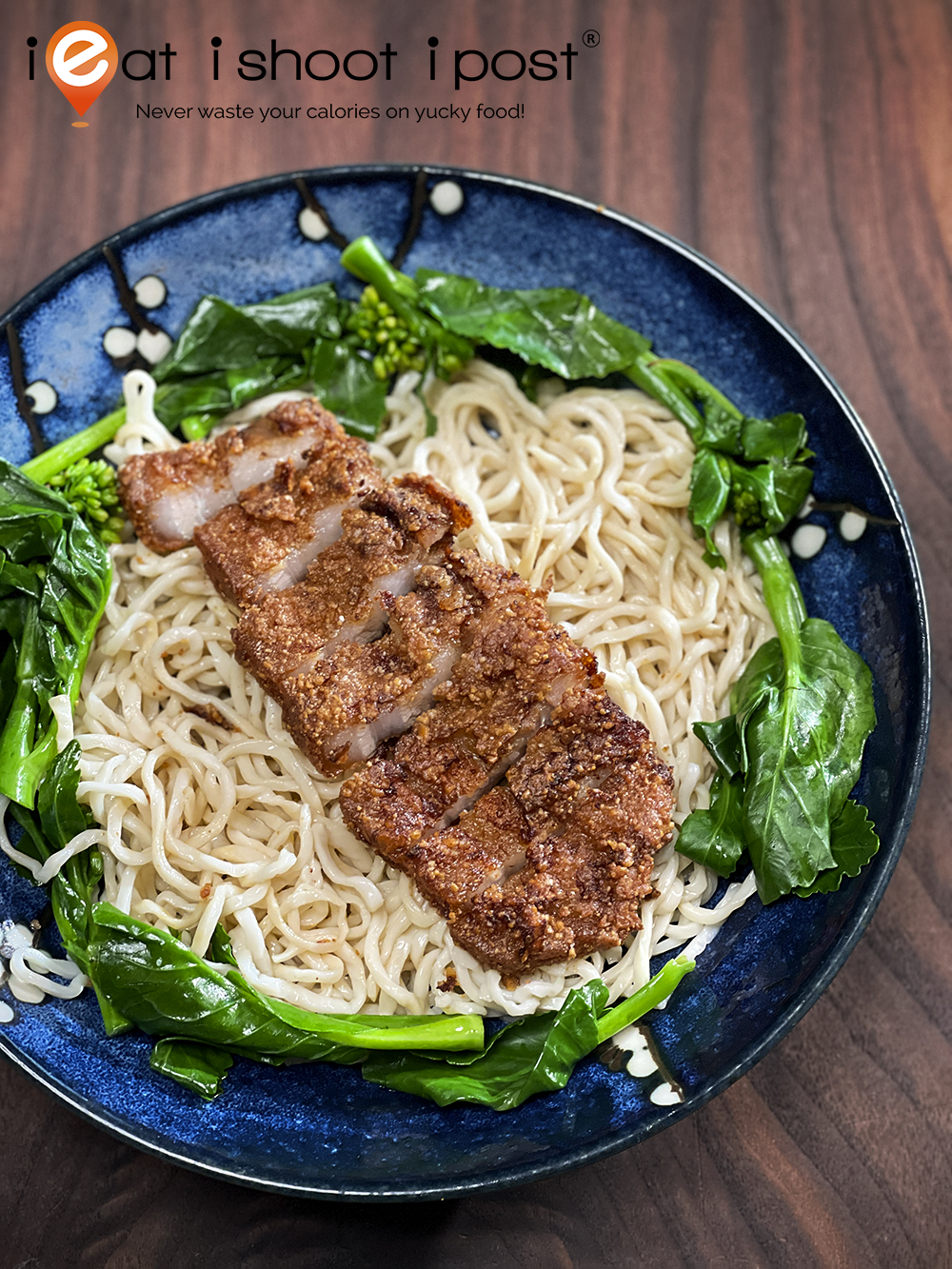
Here are my notes:
1. The main ingredient in the marinade is red bean curd. I have tried a few brands and the one in the middle is the most fragrant, although the cubes are a bit mushy. You should be able to find it at the wet market. The one on the right is from NTUC. It will work too if you can’t get your hands on my preferred one.
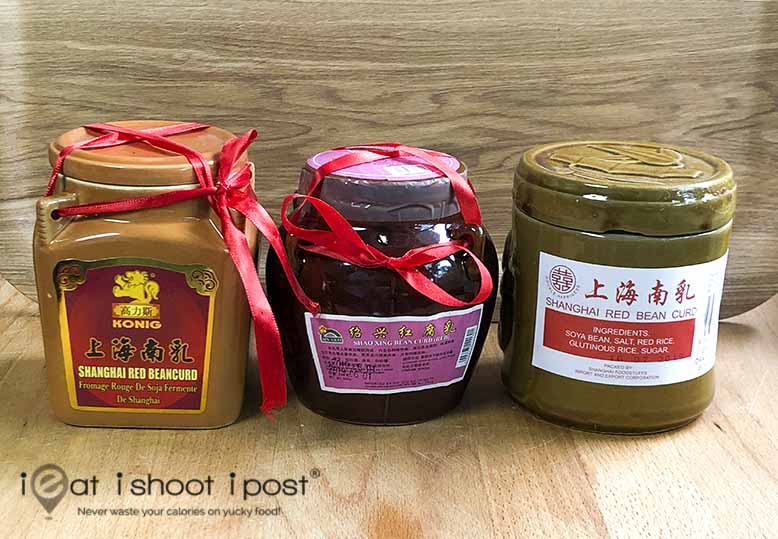
2. When you buy pork belly, try to get the section that is closer to the ribs ie nearer the head. The lower part of the belly ie closer to the hind legs don’t hold together very well and the layers will sometimes just spread out. Pork belly that is too lean will not taste right. You do need a nice balance of fat and meat in order for it to have that irresistible bite and flavour! I have tried many different types of pork belly in the market. Fresh is of course better, but fresh Indonesian pork tends to be very lean nowadays. You can still get ones with a nice balance of fat and meat but you need to look around the wet market. I got great results from chilled Australian pork belly as well as Japanese Pork Belly which you can buy online. The frozen pork belly that you can find at the supermarket shelves are cut too thin for this recipe. You will need to remove the skin as it will be very chewy.

3. I have attempted this recipe a few times with different ways of cutting the pork and dusting the flour. What you want is a light and crispy crust which is full of the flavour of the marinade. The key here is to allow the flour to rest after dusting. Don’t be overly concerned about the even-ness of the batter as an irregular coating will give you nice crispy bits. If you don’t allow the flour to rest, then you will have parts where the batter is white instead of pinkish brown. I have tried using a wet batter where I add the flour into the marinade and just adding the pork directly into the oil without extra dusting. It produces a thinner crust which is not as satisfying.
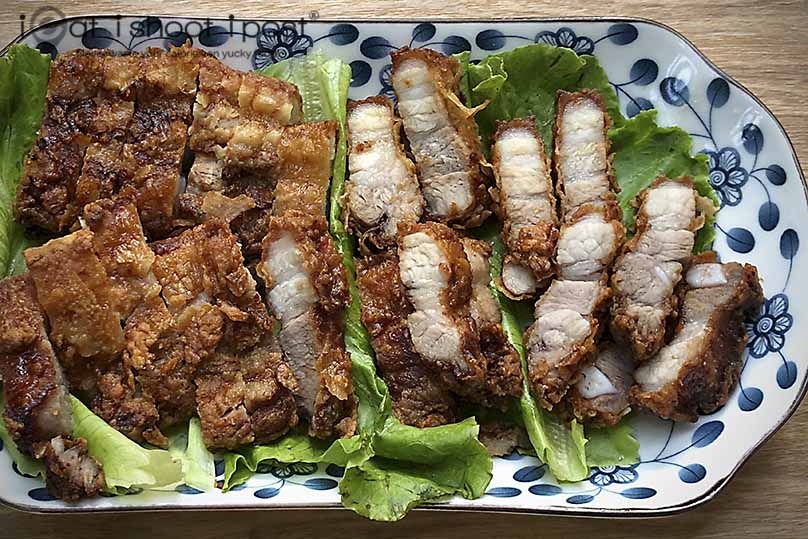
4. I recently discovered the Taiwanese sweet potato and tapioca starch flour that gives you the same crispy batter that you find on those yummy Shihlin chicken chop. Simply replace the rice and corn flour with this Taiwanese tapioca flour.
Previously shot video recipe:
Happy cooking and happy eating!
Disclosure: Some links above are affiliate links, meaning, at no additional cost to you, we may earn a small commission if you click through and make a purchase.



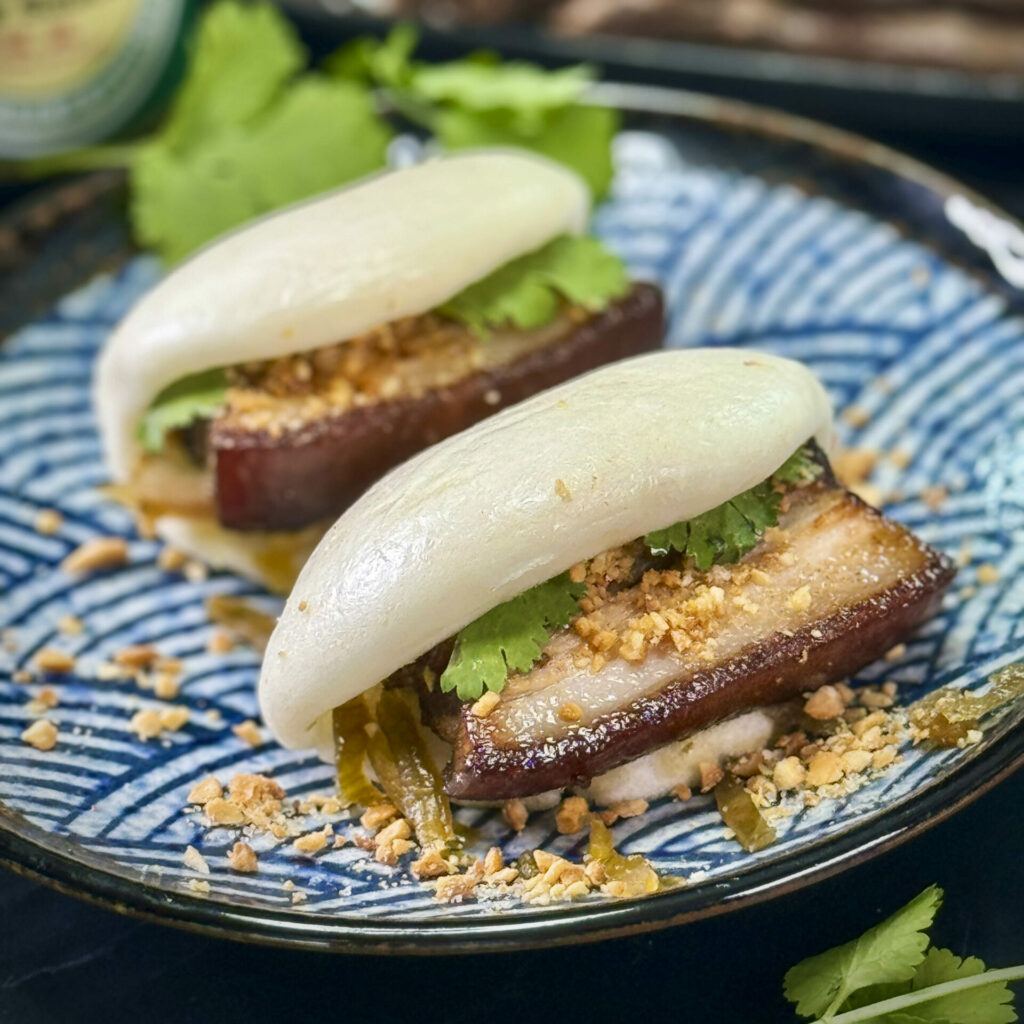

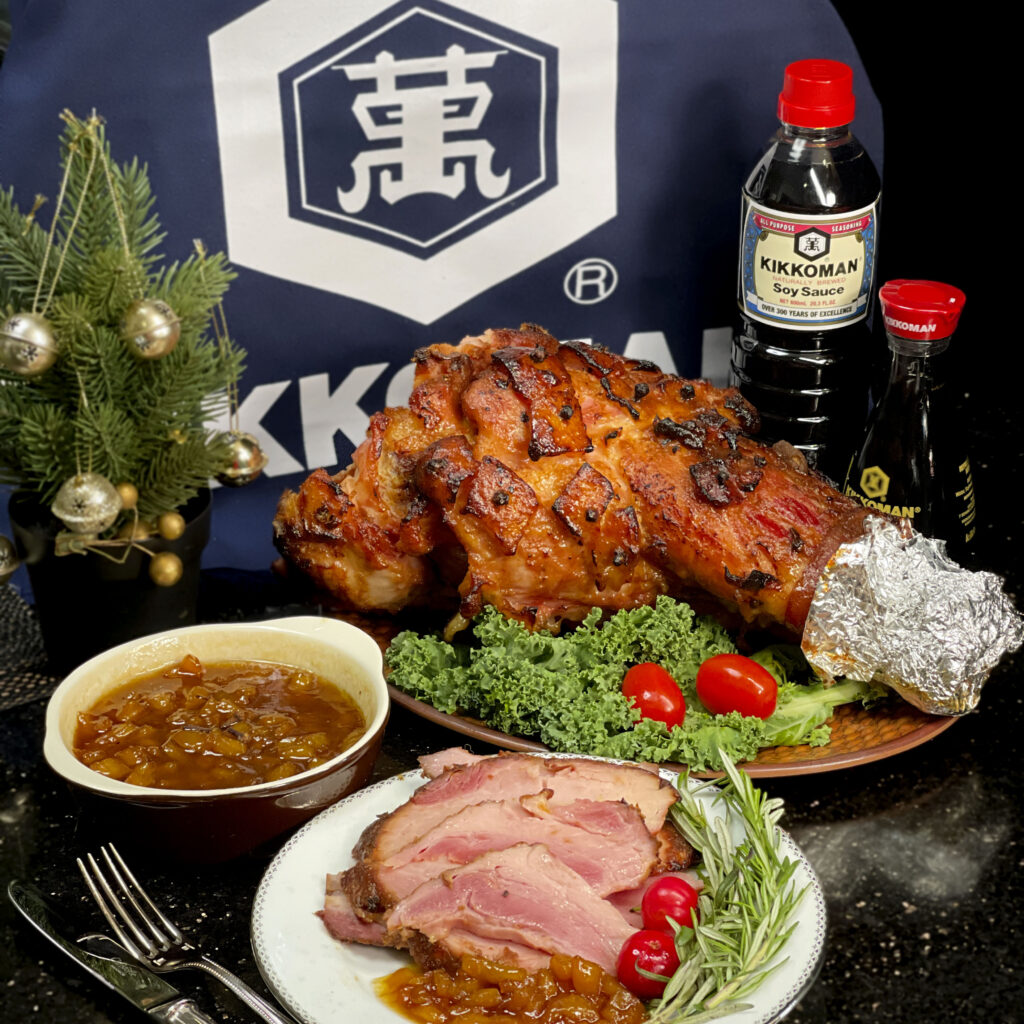
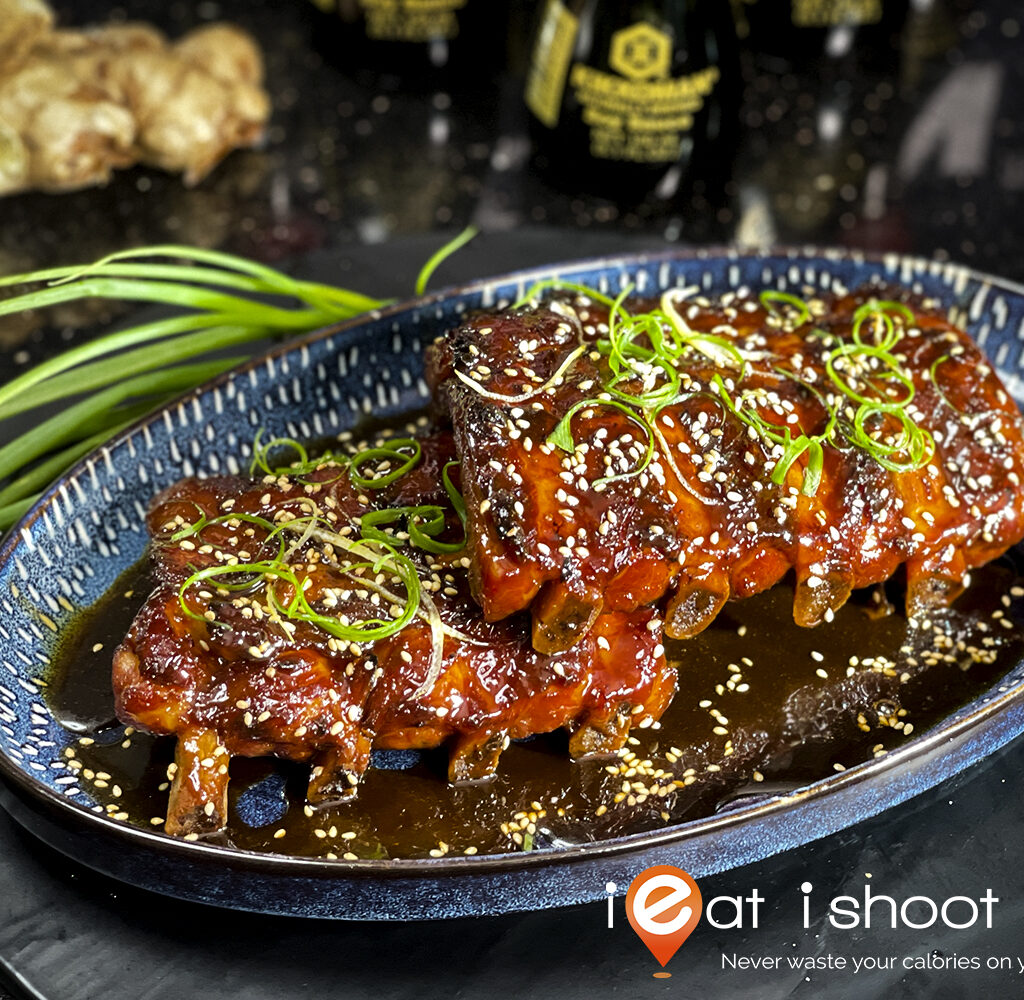

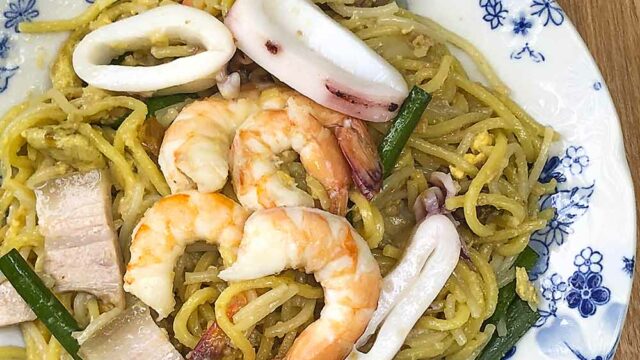



Sounds great. Is the Pork Belly with Skin on or Skinless?
Skinless. It is hard to get the skin crispy using this method.
Ok. Is the Chinese Wine Shaoxing Wine?
Yes.
Able to take a clearer image of the middle red bean curd? The brand on the label is a little illegible.
The brand is “Sin Guo”
Your oil is probably not hot enough. It needs to be 170 to 190°C
Not going to taste the same, but you can try.
really 1.2 cm thick? is it a typo?
1 to 1.2cm is good. The pork shrinks as it is fried.
The Sin Guo brand Nam Yee dimension is big (vs the normal white bean curd). Do we use 3 pieces of that size please? Thanks for clarifying.
You want to have 3 pieces roughly 2cm cubes.